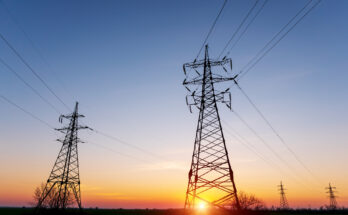Many people had never heard of solar roofs before Elon Musk presented the Tesla Solar Roof in 2016. However, the concept of a roofing product that can generates energy while still blending in with standard tiles has been around for decades.
Companies ranging from Dow Chemical Company to the now-defunct BP Solar have experimented with solar roofs, although many of these products are no longer available. Solar shingles have proven costly to produce and install, and they are not yet as efficient as traditional solar panels. This has prevented them from breaking into the mainstream.
GAF Energy, the sister business of one of the world’s top roofing firms and a branch of privately held Standard Industries, is now starting a new solar shingle initiative. It just launched Timberline Solar, which the business claims would be less expensive and more dependable than Tesla’s Solar Roof. It just received the Best of Innovation Award for Smart Cities at CES.
What distinguishes GAF Energy?
“We are a division of the world’s largest roofing manufacturer.” “We have access to resources that other solar firms do not,” stated Martin DeBono, President of GAF Energy. “No one has ever attempted to create a solar device that a roofer could install.” And we did it, and our product is installed with only a nail gun. It’s twice as quick as standard solar.”
Timberline Solar can be attached to the roof like a standard shingle, according to GAF Energy, which reduces the complexity and expense of installation. The shingles are also bigger than Tesla’s, measuring 17 inches tall and 64 inches long, implying fewer pieces to build and fewer individual wire connections, which the business thinks would reduce costs while enhancing dependability.
However, because of the wider and heavier construction, GAF Energy’s shingle does not blend in as well as Tesla’s product, which is practically indistinguishable from standard roofing material.
GAF Energy claims that its strong links to the roofing industry would help it save money on sales and marketing since it will be able to acquire solar clients from the enormous pool of consumers who are already going to GAF for a new roof.
′′The natural time to install solar panels on a roof is when you’re about to replace your roof. “It makes no sense to install brand new PV on an old roof that is long past its guarantee,” stated David Winter, Co-CEO of Standard Industries.
According to Winter, one out of every three asphalt shingle roofs in the United States is a GAF roof. “So we’re the individuals that are sitting at the metaphorical kitchen table with the homeowner when they need to fix their roof and can offer the notion of solar.”
However according Wood Mackenzie, customer acquisition fees typically account for 23% of the entire cost of a home solar system, so saving here might be critical.
GAF Energy also boasts that it assembles and partially produces its shingles at its San Jose, California factory. While the firm imports its PV cells from Thailand, it feels that some indigenous manufacture would be beneficial.
“What it allows us to do is take advancements in our product from the lab and get them to instantiation in the product very, very rapidly,” DeBono explains. Alternatively, teams would have to go overseas to implement modifications. “And what you see is that modifications to your product take quarters and years, literally, but here it takes hours and days.”
There are still open questions
Only real-world performance throughout the product’s 25-year warranty will reveal whether GAF Energy has truly broken the code to a cost-effective and dependable solar shingle solution. GAF Energy would not disclose exact pricing information to CNBC, but DeBono estimated that Timberline Solar might cost almost twice as much as replacing a roof with standard asphalt shingles. “Assume that in many sections of the nation, the roof costs fifteen thousand dollars. Adding a solar system would cost another $15,000,” DeBono explained.
A $30,000 solar roof would be significantly less expensive than anything on the market now, and may even be less expensive than a new roof with normal solar panels.
In comparison, Tesla’s predicted cost for a typical 1,700 square foot Solar Roof in the Bay Area is around $40,700 before solar subsidies. However, Tesla’s product has been known to cost far more than original projections. Last year, the firm was faced with a class-action lawsuit after significantly raising Solar Roof rates for clients who had already signed contracts. The efficiency of GAF’s shingles in a real-world setting is also an unresolved subject, because past solar shingle technologies were not comparable to standard panels.
′′They function at a lesser efficiency,” said Barry Cinnamon, founder of Silicon Valley-based solar installer Cinnamon Energy Systems. “Because they’re flush with the roof, and the roof is hot.” As a result, heated solar cells in traditional modules perform less efficiently than cooled solar cells.”
GAF Energy claims to be employing high-efficiency mono-PERC cells, which perform better at high temperatures than typical monocrystalline PV cells. However, considering the Timberline Solar shingle’s dimensions and advertised 45-watt capacity, it would still generate less energy per square foot than Tesla’s newest 71.7-watt shingle or an average-sized 300-watt solar panel under perfect conditions. Because GAF Energy’s shingles overlap, each one has a significant amount of inactive material. If only the active solar cells are considered, the business says that its shingle’s efficiency is comparable to Tesla’s shingles, however it is still less efficient than a typical solar panel.
GAF Energy’s shingle had not yet been issued at the time of CNBC’s interview with Cinnamon. However, when it came to solar shingles in general, he was skeptical that they would ever catch on with the general public. “I honestly don’t see anything changing with any of these variables that will make it a widely available mainstream product.” I believe it will always be a niche product, similar to a high-end sports vehicle.”
Nonetheless, Gabriela Bunea, Senior Vice President of Solar R&D at GAF Energy, believes Timberline Solar will be able to compete on cost, efficiency, and dependability. ′′I hope that in five or 10 years, when you’re thinking about replacing your roof, you’ll choose the solar roof because it makes economic sense, it’s attractive, and you’ll have the same guarantee as the rest of the roof.”





